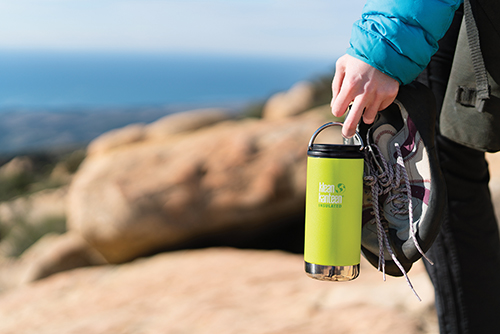Klean Kanteen
Pharos Saves Businesses Time and Money by Speeding Up Chemicals Management
Pharos Saves Businesses Time and Money by Speeding Up Chemicals Management
Many companies that care about health and the environment work hard to avoid what we call a regrettable substitution. This means replacing one chemical with another chemical possessing similar health and environmental impacts. Obtaining the latest information available for a chemical or chemicals of interest is key to creating safer products for these companies. However, at any given time, hundreds of chemicals with differing environmental and health hazards await screening. This can mean hours spent digging into restricted substances lists, looking into various chemical databases, and tracking down publications discussing health effects of a chemical. Screening each chemical takes time and money, therefore, finding a high-quality tool with a strong return on investment is key.
Klean Kanteen® is a family-owned company on a mission. They introduced the first stainless steel, BPA-free, reusable water bottle in 2004 because they wanted a non-toxic solution to single-use plastic water bottles. Today, as a certified B Corporation, they not only create the highest quality reusable products on the planet, they work hard to bring benefit to the people and places they touch. Danielle Cresswell is Klean Kanteen’s Senior Sustainability Manager. Part of her role is to create social and environmental strategy, and measure and report on her company’s sustainability performance. She works primarily with Klean’s product and supply chain teams, and also conducts chemical hazard assessments to identify and avoid chemicals of high concern in Klean product materials—and she achieves this through Habitable’s Pharos chemical database.
For Cresswell, who works at a company with fairly unchanging product materials, except for surface color, Pharos is the perfect resource that not only saves her time, but also money. She uses Pharos to identify the safest coatings that also satisfy Klean Kanteen’s color-loving consumers. Pharos is meant to be a “first line of defense” in chemicals management. With the capacity to compare up to 500 chemicals at a time, and the ability to pull up 18 different hazard endpoints, Pharos is the first resource Cresswell consults before determining next steps. Especially useful to her are the Green Screen List Translator (LT) Scores housed in Pharos. She can search a chemical, and quickly look for LT-P1 and LT-unknown assignments. The information provided by Pharos helps her make critical decisions in chemical management, such as whether or not additional resources need to be dedicated to outside chemical assessments. Cresswell states that “you don’t need a PhD to understand Pharos” and at the end of the day, not only is it easy to understand, but also effective in helping Klean Kanteen make safer choices.

Photo courtesy of Klean Kanteen
The GreenScreen List Translator™ provides a “list of lists” approach to quickly identify chemicals of high concern. It does this by scoring chemicals based on information from over 40 hazard lists developed by authoritative scientific bodies convened by international, national and state governmental agencies, intergovernmental agencies and non-profit organizations. Each of the GreenScreen Specified Lists is mapped to hazard endpoints and a hazard level or range based on the GreenScreen Hazard Criteria. Similar to a full GreenScreen assessment, the hazard classifications for endpoints are then used to derive a GreenScreen List Translator score.